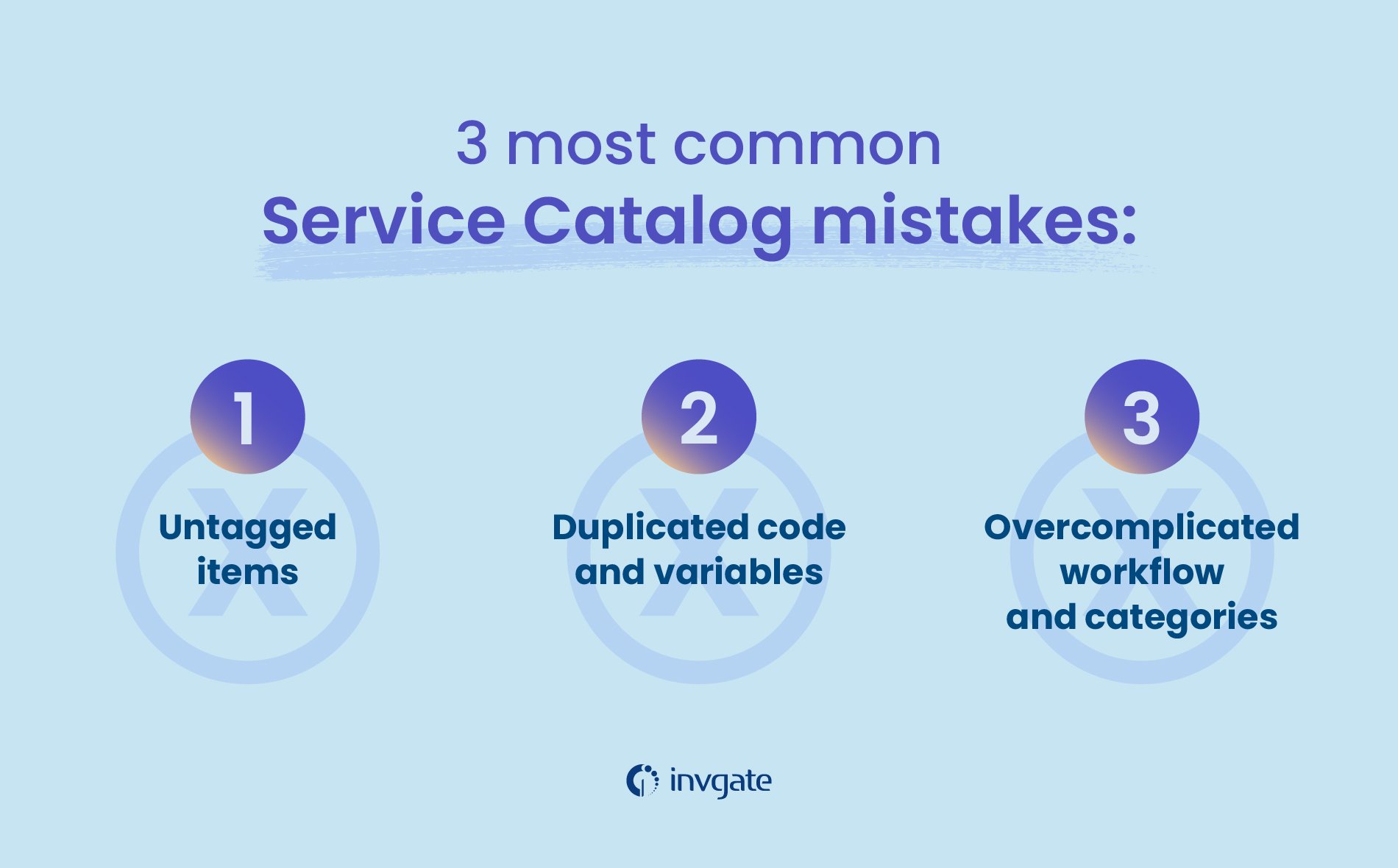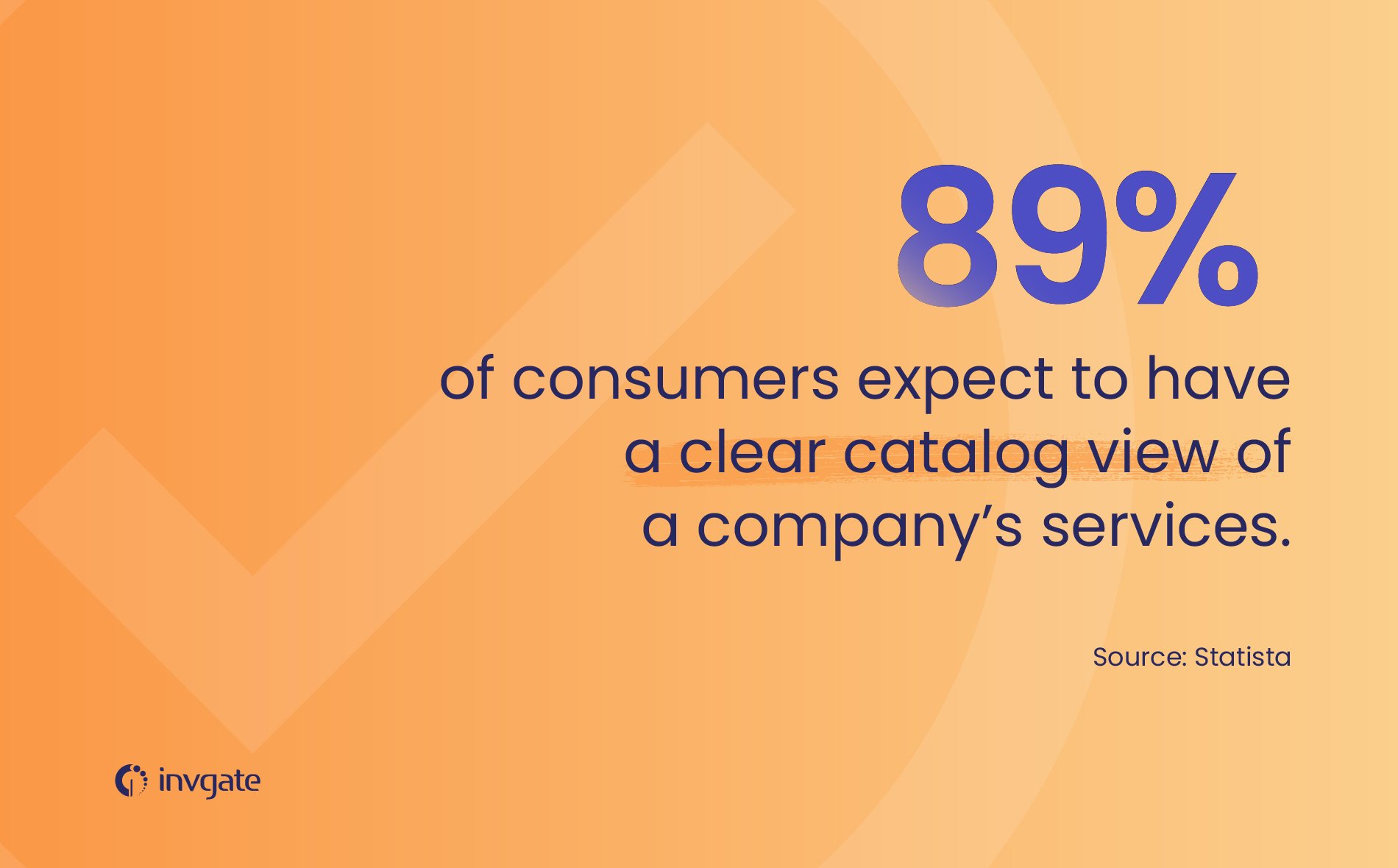There's a lot that goes into creating an IT service catalog. And as much planning and research as you can do, you can still end up making some beginner service catalog mistakes. But one of the worst things about these mistakes is that you can be knee-deep in them before you even know their full effect on your processes. In this article, we’ll tell you what things you have to avoid when designing your service catalog.
Hindsight is 20/20. You may have made a great effort to create an ITIL aligned service catalog, but still be slapping your own forehead in frustration after you notice that you’ve made one of the mistakes listed here. Don't beat yourself up too hard; typically, companies will often rush into creating their catalog without paying mind to potential pitfalls. This is not a criticism, but rather an assertion of the truth of averages.
As you know, an IT service catalog is: “a one-stop resource that provides end-users with clear and accurate information on all IT services that an organization’s IT department offers. It is a centralized database of active IT services from the IT service portfolio.”
Looking for opportunities for optimization and improvement should be part of your service catalog best practices. So let’s not waste any time, and get to the service catalog mistakes you absolutely have to avoid or correct ASAP.
The most common Service Catalog mistakes

These are the ones that practically everyone makes — or has made — at some point in their IT career. You may find yourself chuckling and saying “Yeah, that was totally me” at some point, or nervously wringing your hands and uttering “Uh, I need to fix that right now.” Wherever you are on the spectrum, these catalog issues are pretty persistent.
Untagged items
How often has this happened to you? Meta-tags are what enable you to retrieve catalog items using the search feature of any decent self-service portal. Meta-tags are useful because they use keywords or terms that are not necessarily included in the product’s or item’s description.
But, as you’ve probably guessed, this feature is generally overlooked, and thus under-utilized. As a result, you could be making your users’ lives harder by complicating their search efforts, breeding frustration.
Quick Fix: it’s time to populate the meta-tags on your service catalogue items! If the field’s not visible in the default form configuration you’ll have to add it manually in the form configuration section of your catalog.
Finding duplicate code and variables
Your service catalog will often require you to input items that are very similar, but different. What happens in these cases is that very often the “service logic” associated with them has nearly negligible differences because they belong to the same type of business process. If you don’t perform a thorough analysis before the fact, it’s easy to succumb to the copy/paste demon and just reuse similar scripts with minor modifications.
The main issue with this type of mistake? If there are problems with the code, you’ll find that you have to fix it as many times as you copied the code for each new item. You can see how this problem can quickly get out of hand. And yes, we know that this will put a strain on development efforts and increase turnaround times, but that's the way it goes.
When it comes to variable duplication, things can be similar; it’s easy to use a variable multiple times for multiple catalog items. While this is all well and good when the variable represents the same concept, this can lead to inconsistent variable naming and description. It’s not the end of the world, but UX will suffer for it, and you don’t want that in your knowledge base.
Quick fix: UI scripts can help a great deal when it comes to this. They can encapsulate the similar code connected to different catalog items while leaving only the item-specific functionality in the resulting catalog script. When it comes to variables, using variable sets across to keep variable names and descriptions consistent across items is your best bet.
Workflow and categories that are too complex for their own good
You could say that the flexibility afforded by the service catalog is a good thing. But, as with most things in life, it’s a “glass half empty, glass half full” kind of situation. So, it shouldn’t come as a surprise that flexibility can also lead to unmanageable complexity pretty darn fast, tanking your UX like no one’s business.
One case where this becomes evident is in catalog hierarchies, which can become deeply nested. And by “deeply nested”, we mean that they can become incredibly hard to navigate until you finally find what you’re looking for. In addition, you (or your users) can add more specialized or different requirements as time goes on, and workflow can become a nightmare version of a Russian nesting doll.
Quick fix: try to plan out the depth of your categories and workflows beforehand. We believe that three or four levels will do in most cases, and making use of smaller, modular workflows can also help with this.
Common Service Catalog SNAFUs
Service catalogs are a vital part of a working service desk. But, when it comes to your service desk and its many run-ins with user needs, it’s practically a total business necessity.
Think about it for a minute: the endless scenarios that are made easier due to the existence of a service catalog and its ability to enhance and optimize both by making access to a knowledge base easy, and by enabling automated workflows that reduce workload by incommensurable amounts. In a service desk — where the time of IT specialists is already stretched thin — this is twice as important.
And this is also where having your service catalog managed well can make all the difference. Let’s take a look.

Having too many services listed
How many times has this happened to one of your users? Overwhelming them with services can seem like a good idea at first (“You’ll find everything you need!”), but in reality, it'll result in confusion, and finding the exact thing they’re looking for can be a near-impossibility. Being spoiled for choice is one thing; being thrown into a choice vortex is quite another. Think about this scenario:
- Johnny is having some problems accessing some information on his virtual wallet.
- He slogs through an endless list of probable causes, all of which could apply.
- He chooses one and waits for a response from the service desk staff.
- They say that he’s chosen incorrectly, and close the ticket because of Johnny’s “misdiagnosing” of his issue.
- Johnny ends up choosing “Miscellaneous” or “Other” to try to get a straight answer.
What do you do to avoid this happening to you? We usually recommend our users to have no more than 15-50 services listed on their catalogs to avoid overwhelming their end-users. And this also applies if you have service requests entered as services in your catalog! Specific cases and instances should always be listed as broader categories, and not as categories in their own right.
Having too many ways to categorize a ticket
Employee experience and end-user experience are hugely important for IT professionals. When it comes to creating your service catalog, we’ve discussed the peril of making things overly complex. If IT pros can’t find the type of ticket they’re looking for, this can increase resolution times, frustrating both the professionals and the users: a perfect storm of unhappiness.
Let’s take the perfectly common issue of a jammed printer as an example. If your service desk has 10 different ways to categorize a jammed printer (HardwareIssue >Printer >Jammed; Printer > HP1100 > Jammed; etc.) you can be that those ten ways will be used. In turn, your reports are not going to convey an accurate picture of how many printer issues you’re facing, and they’re going to frustrate everyone involved.
And, taking into account that metrics often come from our ticketing system, you should be standing up and taking notice. The taxonomy of our service catalog matters, and it does so especially when we log tickets. Unsurprisingly, less-than-stellar information leads to subpar results.
Final thoughts
We’ve been clear about the importance your service catalog makes to both your service desk and the happiness of your IT staff. If you want to maximize the tools that the service catalog offers, you’ll need to optimize. And even if you haven’t been guilty of making these service catalog mistakes yourself, there are surely a couple takeaways from this list you could use to tighten the screws a bit.
The rest is going to be about using the right tool for the job, and making sure that you use them intelligently. InvGate Service Management is a powerful, intuitive service desk solution that allows for easy service catalog creation, as well as a seamless integration into the self-service portal. But don't take our word for it -- try it for free with a 30-day trial.
















